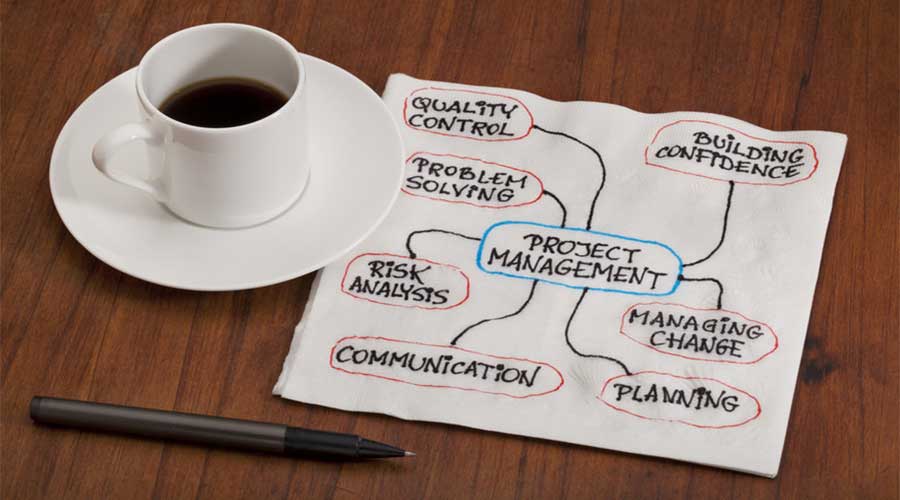Project Management for Sales Staff in Digital Media
In most digital media organisations the sales process is methodical; measured by KPIs and financial targets which are cleverly designed to equate to a standard outcome; it usually looks something like this:
X number of calls equals X number of meetings, which equals X number of sales.
This formula is critical but it is the surface and we know the substance is what really amplifies KPIs to increase your conversion and customer satisfaction; thus having them return to you again and again. That’s the goal, right? Repeat business, baby!
Let’s say you’ve got the meeting and qualified there is an opportunity, now let’s look at that process:
What is the objective and specific desired outcome?
Of course you know that qualification is important but remember that there is always more than meets the eye. If a client tells you they want only email, ask them why? Then why not other channels. Never just say OK. Always ask a question to further understand why.
Why is this campaign important to you?
What would the desired outcome look like for you?
Are you speaking to any other agencies?
What is your budget?
What is your timeline?
What have you done in the past? Was it successful? Why?
You get my point… Following your interrogation qualification make sure you repeat back to them the information as you heard it and what you interpreted it as meaning for them and their campaign. Again, get them to agree this is correct. “Is that correct?” And agree that they would like to proceed. “Great, I’ll send you the contracts!”
Who are your customer stakeholders?
Find out everyone within the customer’s business that plays a part in this campaign. Find out if they need to be kept in the loop or if they have influence, if they do then you need to be communicating with them.
Identify your team
These are your internal stakeholders; the operations team. Who is going to be pulling the campaign together? Identify everyone involved.
Brainstorm
Depending on your process you may want to bring your customer contact and the operations team into a meeting to discuss the campaign together or you may do this separately.
Client brainstorm – If you are doing this separately, ensure that you gather all information the operations team will require to put the campaign together and limit your need to go back and forth to the client with little loose ends.
Internal brainstorm – Communicate to the relevant stakeholders within the operations team what the requirements are for the client, including budget, timeframe, parameters of campaign (look and feel, their demographic, etc)
Identify hurdles
Work with the operations team to identify if there are any potential hurdles in you achieving the outcome you have promised your client.
Identify resources
Are there particular programs or equipment required? How much time needs to be allocated?
With your team, review all of the above – update your client
Once you have gone through all of the above, confirmed the timeframe and that your team can meet the clients requirements, go back to your client to confirm everything is on track.
Confirm everyones responsibilities and timeframes
Confirm everyone is on the same page and committed to delivering their piece of the campaign on time and within the parameters set out. Communicate that you will then be in touch as each milestone is reached to be kept aware of its progress.
Check-in against milestones – update your client
If there are any delays you need to know about this before it is over time. Do not wait until the day tasks are due for completion to follow up on their progress. Do this regularly and ask the team for realistic timelines of completion. Then update the client accordingly.
Deliver and celebrate
Congratulate your client on a successful campaign, then go high five your operations colleagues and thank them for a job well done!
Sales is and project management are all about communication. Set expectations with your clients and never compromise them. Open communication and a project management process will keep you appearing sharp and on the ball to your clients.
Related posts
What does a 2015 e-commerce strategy look like for brands? Well according the Melbourne Online Retailer and ecommerce conference held last week, ecommerce strategies involve smart marketing, should be all encompassing, and including a plethora of solutions and services. All of this combined helps to ensure that brands are competitive in this modern day ecommerce […]
Understanding emotions that affect purchasing behaviours is a key to ensuring brands succeed with their marketing budgets. Lets look at an example. Kmarts ‘Bom Bom Bom’ campaign and the discount ‘everyday low price’ strategy. Kmart worked to change consumer’s attitudes to the brand using the ‘Bom Bom Bom’ and on the emotions that drive consumption […]
After more than 6 years of experience, I get the same question again and again: How can we engage our email lists from the initial subscription and convert them all the way through to loyal customers? For that reason, we joined last week a a Webinar with Bob Kamal from Lyris HQ who presented on […]




